2/9/1996 - The tumultuous flying career and life of Adolf Josef Ferdinand "Dolfo" Galland, Jr. concludes when the former fighter pilot and Luftwaffe commander dies from a heart ailment in his Oberwinter, Germany home at the age of 83.
Galland
The second of four sons (Fritz, Adolf, Wilhelm-Ferdinand, and Paul ... Wilhelm-Ferdinand and Paul also become German aces for the Luftwaffe during WWII ... Wilhelm-Ferdinand will be credited with 17 aerial victories before being shot down and killed on 10/31/1942, while Paul will tally 55 triumphs before being shot down and killed on 8/17/1943), Adolf Jr. is born in the Prussian province of Wesphalia on Tuesday, March 19, 1912, at the Westerholt home of his family. A clan with French Huguenot roots (the first Galland in the region is a 1792 French refugee from the town of Veynes), the son of Galland Sr., the bailiff of Count von Westerholt (the manager of the Count's land properties), and his French mother, Anna Schipper Galland, Adolf develops a lifelong passion for flying in 1927 after a glider club, Geisekirchen Luftsportverein, starts up on a heath east of the Haltern-Munster railway and the von Westerholt estate (after WWI, Germany is banned from having an air force by the surrender terms of the Treaty of Versailles). A twice-a-week journey of nineteen miles to the glider launch site on the wind swept hillside of Borkenberge, Galland will make the journey as often as possible by foot or horse-drawn wagon until his father eventually buys him a motorcycle. Learning the basics of flight and applying them to actual time in the air (along with surviving a handful of crashes), Galland gets his "A" certificate in 1929 at the age of seventeen (in Germany at the time, "A," "B," and "C" certificates are required before an applicant can receive a professional flying license) and by 1932 when he is nineteen, before he graduates from high school, he completes his glider training with Geisekirchen Luftsportverein ... an accomplishment for which his father rewards him by buying Adolf his own glider.
Deciding his career will be in flying, in 1932 Galland becomes one of only twenty individuals (out of 4,000 applicants) to be chosen to attend the flying school of the German national airline, Lufthansa, run by WWI pilot, Colonel Alfred Keller in the lower Saxony town of Brunswick. Impressing his instructors at Brunswick (despite a heavy landing that damages the undercarriage of his Albatross training aircraft and a awkward collision with a lamp post), later in the year Galland is sent to Italy for secret military training and advanced flight instruction, readying the youth for placement within the covert military air force being created at the behest of Adolf Hitler. Back in Germany in 1933, Galland receives training at Warnermunde on piloting flying boats, joins the Zentraie der Verkehrsflieger Schule (ZVS - Central Airline Pilot School) for more training, meets the man chosen to run the Luftwaffe (the military German air force), WWI ace, Herman Goring (he will win the Pour Le Merite, "Blue Max," for shooting down 22 planes during the war), competes and wins several gliding competitions, learns instrument flying, and pilots Junkers 24 airliners from Stuttgart, Germany to Barcelona, Spain for Lufthansa, by way of Geneva, Switzerland and Marseilles, France, and officially joins the Luftwaffe. 1934 finds Galland getting fighter pilot training at the ZVS flight school at the Bavarian town of Schleissheim and becoming an instructor himself at the training center before being posted to Dresden for basic training in the German Army. Training completed, Galland is assigned to the Luftwaffe's first fighter command, the Richthofen wing (named for the top ace of WWI with 80 aerial victories, the Red Baron,.Manfred von Richthofen), Jagdgeschwader 2, based in the historic northeastern German town of Juterbog-Damm. At Juterbog-Damm in 1935, Galland's fledgling career with the Luftwaffe almost comes to an end though when while training on aerobatic maneuvers, the youth combines too slow with too low and crashes his Focke-Wulf Fw 44 biplane ... a violent jolt that puts Galland in a coma for three days, breaks his nose, fractures his skull, and injures his left eye. Deemed "unfit for flying" by his doctors. Galland escapes being sent to a desk to push papers, or worse, sent back to the German Army by having an officer friend risk court-martial by accidentally misplacing the medical evaluation (in need of pilots, the charges are dropped against Adolf's pal), and later when Galland's charade is discovered after he crashes a Arado Ar 68 trainer and is sent back to the hospital with his previous injury exacerbated (there are still glass fragments in his left eye from the earlier crash), he gets his flight status fully back when he memorizes an eye chart his brother has stolen on which his vision will be tested. Fully recovered by 1937, now an mustached adult of handsome dark looks and a fondness for brandy, cigars, and beautiful women, seeking action and more flight experience, Galland volunteers to join German General Hugo Sperrle's Condor Legion, flying in support of the Nationalist forces of Spanish Generalissimo Francisco Franco.
Goering - WWI
Sperrle
Franco
While the Spanish Civil War provides invaluable experience for the German pilots that will soon be fighting WWII for the Luftwaffe, Galland is not a happy camper in Spain. Seeking exposure to actual dogfighting, the fighter pilot instead is assigned to fly a Heinkel He 51 biplane on ground support operations and chaffs at the task (he will be rewarded for his evaluation of tactics, creation of new ground attack tactics, and help developing oil and gasoline bombs with a promotion from lieutenant to captain and Nationalist Spain awarding him a Spanish Cross in Gold with Swords and Diamonds ... only 28 will be awarded in the conflict), displaying his disgust and eccentric personality by flying missions while wearing a pair of swimming trunks as he smokes a cigar in the cockpit of a Heinkel bearing his personal insignia, a rendering of Walt Disney's Mickey Mouse (asked about his style, Galland will reply simply, "I like Mikey Mouse. I always have. And I like cigars!" ... later an ace, Galland will be the only German pilot with a cigar lighter and holder in his plane). Flying abilities noted by his superiors in the Luftwaffe command, his willingness to test himself in the air also almost gets him killed once again when flying low to the ground on a mission, Galland's Heinkel is hit by rifle fire with one bullet going through the plane's wing, another burying itself in the He 51's instrument panel, and a third slug taking off the heel on one of the pilot's boots. The Spanish conflict over for Galland after two years and 300 combat missions above the Iberian Peninsula, in 1938 the flier is back in Germany (he is replaced in the Condor Legion by his friend, future ace, the first man in history to score 100 aerial victories, Oberleutnant Werner Molders) where he writes reports while flying a staff desk for the Ministry of Aviation (RLM), helping prepare pilots for the German invasion of Czechoslovakia (Operation Fall Grun, Case Green, that never takes place), advocating for drop tanks and heavier plane armament, and assigned to the Luftwaffe training site at Tutow, test flying the Focke-Wulf Fw 189 "Uhu" (Eagle Owl) and Henschel Hs 129. As Nazi Germany prepares to begin WWII in Europe, Galland to his dismay is assigned to be group commander of II Gruppe Lehrgeschwader 2, responsible for coordinating and flying ground support missions during the Third Reich's invasion of Poland. Up and in the air before the sun rises on September 1, 1939 (flying a Fieseler Fi 156 "Storch" reconnaissance plane), the first official day of WWII, Galland will fly over eighty strafing sorties in the three weeks it takes the German Tenth Army and 1st Panzer Division to conquer the unprepared Poles (and as part of the squadron's staff, on September 11th, Galland gets to meet Hitler for the first time over lunch when the German dictator visits a number of front line bases). Poland swallowed (with the back stabbing help of Stalin's Red Army), Galland receives an Iron Cross Second Class for his efforts but continues to complain so much about not being a fighter pilot that his commanders finally grow weary of all the grousing (the claim that he has developed rheumatism flying in open cockpit planes finally gains him a transfer) and give the 27-year-old the assignment he has been seeking, posting him to Jagdgeschwader 27 stationed at Krefeld on the Rhine River as adjutant ... a fighter squadron that flies state-of-the-art all-steel, single wing, cockpit enclosed Messerschmitt Bf 109 interceptors.
With the Wehrmacht (the German Army) unleashed on the Low Countries of Europe and France in May of 1940, Galland is finally happy (for a time) piloting a Messerschmitt Be 109 fighter against rival fliers fighting for Great Britain, France, and Belgium (he uses the time between the fall of Poland and the next offensive of the army to perfect his and his group's flying, and to pick up tactical tips from the commander of another Luftwaffe fighter wing, the Jagdgeschwader 53 "Ace of Spades" unit of his friend, Werner Molders). On the third day of the offensive (5/12/1940), with veteran German pilot (the Condor Legion and the conquest of Poland) Lt. Gustav Rodel as his wingman (by war's end, Rodel will be credited with 98 aerial victories of his own and be in command of the Luftwaffe's 2nd Fighter Division), the fledging fighter pilot, patrolling over Belgium at 13,000 feet, will shoot down his first planes of WWII, two Hawker Hurricanes of the RAF's No. 87 Squadron. Later that same day, flying another patrol, Galland will get a third Hurricane. On the 18th of the month, a French Potez aircraft goes down before Galland's guns (an interesting day for the fighter pilot, out of gas, Galland lands short of his base, has German soldiers from a FLAK battery haul his Bf 109 fighter up a nearby hill, and then half flies/half glides back to his base at Charleville-Mezieres, France before gassing up again and flying another mission ... for his actions, he will awarded an Iron Cross First Class from Luftwaffe Generaloberst and fighter Inspector-General Erhard Milch). Back in the sky again the following day, Galland becomes an ace by shooting down three more aircraft over France. For the month of May, Adolf is credited with nine kills. Belgium overrun, during the Battle of France, Galland will add five more victories to his quickly growing total ... a Submarine Spitfire fighter, a Curtiss P-36 Hawk fighter, a Morane-Saulnier M,S.406 French fighter, a British Bristol Blenheim light bomber, and a British Boulton Paul Defiant interceptor.
Galland In His Messerschmitt Fighter
Over The English Channel
Galland
During the three month and three week Battle of Britain to determine mastery over the skies above Great Britain and the English Channel (7/10/1940 to 10/31/1940), Galland will be promoted to major and then oberstleutnant (the equivalent of a lieutenant colonel), become the Geschwaderkommodre of the JG 26 Gruppe III fighter wing stationed near the Pas-de-Calais on the French Coast, guns down another 36 Allied aircraft, is awarded the Knight's Cross of the Iron Cross, he and his wingman survive an air battle over the Thames Estuary with eight Hurricanes, become the third German officer to be awarded a Knight's Cross of the Iron Cross with Oak Leaves, is granted a personal interview with Hitler in which the men discuss the sky battle over England, and begins quarrelling with the head of the Luftwaffe, Herman Goering, over the air commanders use of the service's fighter pilots, clashing about topics as varied as going after air bases and radar installations instead of indiscriminately terror bombing large cities, fighters escorting bombers instead of seeking out the Hurricanes and Spitfires of the RAF, Galland requesting a squadron of Spitfires from Goering as a means of winning the battle (hearing this, Goering will be struck speechless momentarily as his face turns red with rage), debating whether pilots that have parachuted out of their planes should be targeted by Luftwaffe pilots (Goering is in favor of the practice, Galland is against it and says he will refuse the order if it is given), Goering's plan to convert one third of his fighter wings into infantry support bombers, the loss of efficiency experienced by German fighter pilots having to sortie three to four times a day, and the inadequacy of the training of replacement pilots. Not a command structure to inspire trust in the Luftwaffe's upper leadership, the two men will clash with each other up to the last days of the war.
Lunch With The Fuhrer
Goering & Galland
Battle lost as Hitler decides to turn east and invade Russia instead of England, Galland and his command (along with one other fighter wing, JG 2) are left behind as most of the Luftwaffe moves to the Third Reich's border with the Soviet Union. Though not happy to be chasing English all over the skies of Western Europe, Galland's tally of aerial victories continues to climb in 1941. On December 5, 1940, Galland shoots down a Spitfire for his 57th aerial victory, passing the totals of Major Helmut Paul Emil Wick (56 when he is killed over the English Channel on 11/28/1940 at the age of 25) and his friend, Werner Molders (at a count of 55), making him the most successful fighter pilot of the war thus far. On April 15, 1941, Galland takes off from his base in France in his Messerschmitt bound for the town of Le Touquet carrying champagne and lobsters for a celebration of the 49th birthday of Luftwaffe General Theodor "Theo" Osterkamp. Later, all the attendees will have a grand time, but before that partying takes place, Galland and his wingman make a slight detour towards Great Britain where they engage a patrol of Spitfires, shooting down two (Galland's 60th and 61st aerial victories) before finally arriving in Le Touquet.
About To Takeoff For The Party (Note The Basket
Of Birthday Gifts Behind Galland)
Galland At The Party Describing His Latest Two Victories
On May 10, 1941, Galland is given a mission of the highest order as Hitler calls Goering and Goering personally calls Galland with his assignment for the day ... Galland is to lead his squadron on a sweep of the northwestern skies of Europe seeking out and then shooting down the 47-year-old Deputy Fuhrer of the Nazi Party and Hitler's former personal secretary (incarcerated with his boss in Bavaria's Landsberg Prison for attempting a coup against the German government in November of 1923, Hess will be one of the two men behind bars that Hitler will dictate his memoir Mein Kampf, "My Struggle," to), Rudolf Walter Richard Hess, who has taken a Messerschmitt Bf 110, a two-seater twin-engine fighter-bomber, and flown to Scotland to see if he can negotiate a peace with friends in Great Britain. Given his task too late to catch his prey, though Galland tries his best to intercept Hess, the Nazi official is able to avoid German fighters and British Spitfires, and crash lands in Scotland after running out of fuel ... Hess is quickly caught and tossed in prison, and his peace campaign comes to naught (after the war, he will be one of the Nazis tried at Nuremberg for war crimes ... found guilty, Hess will be sentenced to life in prison ... he spends the rest of his life at the Allied run Spandau Prison in Berlin, dying there in 1987 at the age of 93).
Hitler & Hess
The Wreckage Of Hess' Ride
Back flying conventional missions as spring turns to summer, Galland is at 66 victories when he begins one of the most eventful days of his life on June 21, 1941. In the morning, flying near the French town of Saint-Omer, Galland downs two Bristol Blenheim light bombers, but is shot down himself by Spitfires escorting the Blenheims. Crash landing near Calais, Galland returns to his home base, eats a quick lunch and then grabs another Messerschmitt to go out on patrol again. Successful again, he gains a modicum of revenge when he shoots down a Spitfire of the RAF's No. 611 Squadron. Not paying close enough attention to what is going on around him though as he admires his handiwork, the flier is shot down a second time by a Spitfire flown by RAF Sergeant R. J. C. Grant. Forced to bail out of his Messerschmitt as the aircraft catches fire, Galland tempts death again when he tugs at his parachute's ripcord and is horrified to discover he has almost lost the chute in its entirety by pulling the the release cord of his parachute's release harness. Taking a quick second to correct his mistake, Galland leaps out of his fighter, pulls the ripcord of his parachute and descends to safety of French terra firma. Injured leaving the cockpit, Galland is taken to a local hospital where that evening, he is visited by General Osterkamp who congratulates the ace on his survival, and tells the pilot that with his 69th combat victory he has now earned the Knight's Cross of the Iron Cross with Oak Leaves and Swords. Back with his squadron by the beginning of July, Galland rolls the dice with death again on the 2nd of the month when he shoots down another Blenheim, but is in turn shot down himself (he just manages to fly his crippled fighter back to base) and almost killed by a cannon round from one of the bomber's escorts, a round that hits his cockpit seat from behind and would have turned the flier into crimson goo if not for the extra piece of steel armor plate Luftwaffe mechanic Gerhard Meyer had welded onto the flier's Messerschmitt the day before (ironically, Galland berates the man when he hits his head on the new piece of protection getting into his plane, but sings the man's praises the next time the two meet). And this time with a head wound, Galland is back to the hospital again.
Galland And Friend
Bailing Out
Galland's very eventful summer continues with more combat patrols victories, but no further visits to the hospital, hours of mission planning, and on August 9, 1941, he and his pilots play chivalrous hosts to RAF star pilot, legless Group Captain Douglas Bader (the British ace has 22 aerial victories at the time); there will be a lavish meal served to the Luftwaffe's prisoner, a tour of the air base, the British pilot will be allowed to sit in the cockpit of a Bf 109 fighter (the two men will joke back and forth about Bader taking the fighter up for a quick fly around the airfield ... remembering the respect he is shown, Bader will become a great friend of Galland's after the war), and with Goering's approval, Galland arranges for the RAF to drop a replacement artificial leg to the English fighter pilot; an artificial leg which Bader soon uses to stage the first of his many escape attempts of WWII (Bader will end the war confined with other fighter pilots in Coldwitz Castle). Back to his normal routines once Bader is captured again and sent off to a German POW camp, Galland shoots down two Spitfires and a Hurricane on the 19th of August, becoming Germany's highest scoring ace of all-time (but not for long once the Luftwaffe starts chewing up the inferior planes and pilots of the Soviet Union) when he surpasses Baron Manfred von Richthofen's WWI tally of 80 aerial victories with his 81st triumph. Once autumn arrives, Galland adds 15 more RAF planes to raise his tally to 96 victories with yet another Spitfire downed on November 18, 1941, but there his official tally will remain for the next three years.
Galland & Bader Tour The Base
Galland Victorious Again
On November 17, 1941, former WWI fighter ace (he ends the war credited with 62 confirmed aerial victories) and the Luftwaffe's Chief of Procurement and Supply (a position which will lead to conflicts with Third Reich State Secretary Erhard Milch), 45-year-old Ernst Udet, blamed by Hitler and Goering for the loss of the Battle of Britain and then pressured by the two to do more during Germany's invasion of Russia, depression influenced by drink and drugs, commits suicide by shooting himself in the head while talking on the phone with his girlfriend, Inge Bleyle. The actual cause of the ace's death covered up as being caused by a new fighter plane failure during an Udet test flight, the death of the legendary German flier in turn costs the Reich the life of one of its finest pilots, 28-year-old Werner Molders. Flying from the Crimea to Udet's funeral in Germany as a passenger in a Heinkel He 111 of Kampfgeschwader 27, Molders, the plane's pilot, and the plane's flight engineer perish (the radio operator and a doctor on board survive with numerous broken bones) when the Heinkel crashes in Breslau attempting to land during a thunderstorm. Another Berlin funeral to attend (the devout Catholic Molders will be buried next to Udet and Richthofen at the city's Invalidenfriedhof), the flier is escorted to his final resting place by an honor guard consisting of Johann Schalk (a future commander of a squadron of German night fighters, he will survive the war as an ace with 15 aerial victories), Gunther Lutzow (the German ace will be credited with 110 aerial victories in 300 combat missions before his death at 32 in April of 1945), Walter Oesau (the future commander of Jagdgeschwader 1, an ace with 127 aerial victories before he is killed in May of 1944 at the age of 30), Joachim Muncheberg (he will have 135 aerial victories before his death at 24 years of age in March of 1943), Wolfgang Falck (a German ace, night fighter organizer, and wing commander that lives to ripe old age of 96), Herbert Kaminski (a German ace and future group commander that will die in an automobile accident in 1971), Karl-Gottfried Nordmann (a German ace that will survive the war with 78 aerial victories in over 800 combat missions), and Galland. The job of overall commander of the Luftwaffe's fighter forces open with Molders death, with Hitler's approval, despite his many arguments with the boss of the German air force, and his youth, Goering will appoint Galland to the position, a job that comes with a built-in ban on flying tactical or combat missions.
Udet's Funeral - Goering Is At Right Behind
Microphones, Galland Is Helmeted Figure At The Front
Of Casket On The Left
Molders Funeral - Galland Is Mustached Figure At
Front And Center
Galland & Hitler - 1942
Promoted to General der Jagdlieger with his move into Molders position, Galland becomes the youngest general in the German military at only 28 years of age (shortly afterwards, in January of 1942, Galland will receive the Knight's Cross of the Iron Cross with Oak Leaves, Swords, and Diamonds, one of only 27 awarded during the war). High Command membership never a goal Galland aspired to, it takes almost no time at all before the flier is butting heads with Goering and various other Nazi officials, though he starts his three years in office with a triumph, designing an aerial defense as part of Operation Cerberus that allows the battleships Scharnhorst and Gneisenau, and the heavy cruiser Prinz Eugen to successfully run the English Channel from Brest, France without taking any hits while the RAF loses 43 aircraft and suffers 247 casualties. But as the war turns against the Third Reich, the arguments with senior Nazi officials grow louder and louder and louder (Galland finds support coming his way from Luftwaffe Inspector General Erhard Milch, Chief of the General Staff of the Luftwaffe Gunther Korten, Minister of Armaments and War Production Berthold Konrad Hermann Albert Speer, a slew of Germany's highest scoring fighter pilots, and sometimes Hitler himself) over which planes to produce for the Luftwaffe, how many, how to use them, and on and on and on (a passel of disagreements involve the wonder weapon the Germans have produced, the Messerschmitt Me 262 Schwalbe 'Swallow," the world's first operational jet-powered fighter aircraft), dealing with a drug addled madman who could order Galland shot at any time (and Galland doesn't help matters by secretly flying an improved model of the Focke-Wulf 190 fighter and the Me 262 in combat, an activity that results in several more kills for the flier that never go on his final tally of aerial victories). Tired of his patriotism being questioned and being called a coward, accused of being the reason American daylight bombers can't be stopped, during one argument with Goering, Galland will rip off his Knight's Cross and throw it on a nearby table, refusing to wear any of his medals for over six months.
Me 262
Things finally come to a head between the two men in late 1944 and early 1945 with the Reich being bombed by the Americans and English around-the-clock every day of the week as Hitler pulls the plug on Galland's "Big Blow" plan in which over 2,500 fighters horded for massive German strikes against the massed American bombers over the Reich (Galland estimates his flier's will knock 500 bombers down) and instead channels the force into supporting an offensive in the Ardennes meant to drive a wedge between the advancing British and American armies that becomes the Battle of the Bulge. At the same time, a Luftwaffe rival, Oberslieutnant Gordon Gollob (he will end the war credited with shooting down 150 enemy planes flying over 340 combat missions) involves SS Reichsfuhrer Heinrich Himmler (he wants the new Me 262 jets to fly and fight under the SS banner) in the Luftwaffe's internal power struggles by providing the mass murderer with false claims about Galland's womanizing, drinking, misuse of equipment and lack of courage. Given the opportunity to remove a long-time thorn in his side, while preventing his power rival Himmler from involving himself in taking over the air force, Goering relieves Galland of his command on January 13, 1945 (giving Gollob the job) and sends him off to the seclusion of the Harz Mountains on "vacation" (the public is told he is recovering from a wound), where the flier is effectively placed under house arrest. Beloved by a host of fellow German fighter pilots, the reaction to Galland's removal is swift. On January 17, 1945, a small group of high-ranking fighter pilots meets with Goering at the Haus der Flieger (formerly the Prussian House of Lords) in Berlin to protest the firing and other flight issues. Among the protestors are spokesperson Gunter Lutzow, Oberst Johannes "Hannes" Otto Trautloft (he will be credited with 58 aerial victories by the war's end and dies in Bavaria at the age of 82 in 1995), Oberst Eduard Neumann (an ace with 13 aerial victories and commander of the legendary JG 27 fighter squadron, he dies in Munich in 2004 at the age of 93), Oberst Gustav Rodel (at the war's end he will have 98 victories to his credit, he dies in 1995 at Bonn-Bad Godesberg), and Oberst Johannes "Macky" Steinhoff (he ends WWII with 178 aerial victories to his credit, and dies in Westphalia in 1994 at the age of 80). Angered by what he believes is gross insubordination, Goering wants to shot all the protestors (and Galland who he believes has instigated what will be known as The Fighter Pilot's Revolt), but holds off starting a blood bath among his own men without Hitler's approval (and evidence backing up the claims of treason) ... which luckily for Galland is not forthcoming. Recognizing the foolishness of removing highly trained pilots from his air force when they are vitally needed and already in short supply, Hitler tells Goering to back off (his exact words are to "stop all this nonsense") and put Galland in charge of creating the world's first fighter squadron of jets.
Gollob
Lutzow
Steinhoff
Ordered to Karinhall, Goering's large hunting estate in the Schorfheide Forest northeast of Berlin, Galland is offered the command of Jagdverband 44, and he wisely accepts with one caveat, Gollob is to have no say in how he runs his group, which the Luftwaffe Reichsmarschall agrees to (Goering will tell Galland that he wishes he wasn't so corpulent so that he could fit into a Me 262 and combat fly with Galland on his attacks on the American bomber streams and their P51 escort fighters when he meets with the flier for the last time of 4/21/1945). And so, the final acts of Galland's WWII flying adventures begin on February 22, 1945 with the jet fighter unit's official creation (he begins with sixteen operational jets and fifteen pilots, numbers that get slightly beefed up when General Josef Kammhuber releases a handful of pilots and planes from two bomber wings that are training on the jets as bombers). Setting up at an airfield near Munich, twelve jet fighters fly the group's first mission on April 5, 1945, shooting down three American B-17 bombers. Official count halted when Galland was made head of all the Reich's fighter plane, the pilot finally adds to his total kills when flying an Me 262 jet, the ace shoots down two American Martin B-26 Marauder bombers. Towards the end of April, Galland has a six day period in which his friend, Steinhoff survives crashing on takeoff when a tire blowout and collision with another jet sends the ace careening off the runway (turned into a "human torch," the flier will suffer massive burns over his entire body that keep him in the hospital for two years and require years of reconstructive surgery, including a British surgeon rebuilding his eyelids ... amazingly, he will become a general in the West German air force in 1960), Lutzow goes missing on the 24th of the month while diving away from two Republic P-47 Thunderbolt fighters escorting a B-26 American bomber mission, and in between the two losses of friends under his command, the ace becomes the 103rd and last German pilot to score 100 aerial victories (the last of any nation in the war, and maybe the last of all time given the changes that have taken place in aerial warfare).
Steinhoff In The Hospital
Lutzow's Last Mission
Galland's last mission takes place on the 26th of April when he intercepts a bomber stream of Marauders, shooting down two for his 103rd and 104th victories of the war (his notions about the jet are correct and the new aircraft ends the war with a kill ratio of shooting down four planes for every Me 262 the Luftwaffe loses ... too little though too late to have an effect on the outcome of the war in Europe), but again he makes the mistake of staying in the area to confirm the kills, only to be hit himself by fire from a Thunderbolt fighter piloted by USAAF Lt. James J. Finnegan. Aircraft crippled and the German ace hit in the right knee, Galland drops into a cloud and escapes more gunfire from Finnegan (the two will meet in Marin County, California in 1979), but nursing his jet back to base, he arrives at the airfield just as it is being beset by another group of Thunderbolts. Landing under fire, Galland escapes his shot-up jet and is soon on the way to the hospital in the nearby Bavarian city of Tegernsee. War almost over, Galland risks his life once more by contacting advancing elements of the U.S. Army to coordinate the surrender of his command (the SS is shooting Germans they believe are quitting early on the Nazis) and is requested to fly his command to a USAAF controlled airfield, a request which Galland declines due to bad weather, technical problems, and roaming SS killers. Instead, he orders his command to destroy its jets, which takes place as ordered without any further loss of lives, and surrenders to the first American infantry that arrives at the hospital. The war in Europe over on May 8, 1945 after five years, eight months, and one week, Galland is flown to England for a lengthy debrief on the war by the RAF (he will be treated very warmly and with great respect by his former enemies thanks to help he gets from Douglas Bader). In August of 1945, he is returned to Germany and placed in a prison in the Bavarian town of Hohenpeissenberg, is brought back to England in October for further questioning, and is finally released on April 27, 1947.
Finnegan (L) And His Crew Chief
Galland's Last Mission
Combat days finally over, Galland goes to the German state of Schleswig-Holstein (the northernmost of West Germany's sixteen states), where he lives with Baroness Gisela von Donner and her three children at her estate, for a time adding income to the struggling family's funds by becoming a forestry worker (he also helps out by putting food on the table through his hunting in the nearby forests). The itch to fly again hits him when he is contacted by Kurt Tank, the designer of the Fw 190 fighter, about a job with the Argentinian government working with Tank on a new generation of fighters. Moving to Buenos Aires with Gisela and the children, fluent in Spanish from his days in the Condor Legion, Galland works as a consultant, lecturer, and trainer, flying a British Gloster Meteor, for the Argentinian Air Force (FAA) until 1955 (due to a clause in her dead husband's will that would cut off her wealth, the couple will never marry and eventually, tired of Galland enjoying too much of the Buenos Aires nightlife, she returns to Germany in 1954), returning to Europe from time-to-time to test fly various planes and jets (during one visit, he teams with former Luftwaffe commander Eduard Neumann, flying a Piaggio P149 in an air rally across Italy in which seven planes crash and two pilots die ... despite horrible weather the pair come in second in the contest). Not lonely without Gisela for long, he marries Countess Sylvinia von Donhoff on February 15, 1954 (unable to have children, the pair divorce in 1963), before returning to Germany in 1955 as the best selling author of "The First and the Last," Galland's up close and personal tale of his time in the Luftwaffe (the book will receive favorable reviews, be published in fourteen languages, and sell over three million copies).
Galland in Argentina - 1951
Glider Prep With The Countess By His Side
The Book
Far from the truth, in 1955, Galland is denied a position in the new German air force due to his association with Hitler, Goering, Speer, and others in the upper level of the Nazi political hierarchy during the war, so he starts up an aircraft consultancy in Bonn that allows him to make a livelihood, while giving him time to continue to fly. In 1956, Galland becomes the honorary chairman of the German Association of Fighter Pilots, an avenue that allows him to reunite with old members of the Luftwaffe, and meet RAF and USAAF contemporaries (he will become somewhat of a fixture at the annual "Gathering of Eagles" that the U.S. Air Force puts on at the Air Command and Staff College at the Maxwell AFB in Montgomery, Alabama). In 1961, Galland becomes a member of the Gerling Group of Cologne, helping them develop their aviation business, a well paying job that allows the ace to buy himself a Beechcraft Bonanza for his 50th birthday in 1962 (he names the plane, Die Dicke, "Fatty"). In demand for his experiences during the war, in 1969, Galland serves as a technical advisor on the Guy Hamilton film, "Battle of Britain," starring Michael Caine (the character, Major Falke, played by Manfred Reddemann will be based on Galland ... fiesty as ever, he tries to shut the production down over a Nazi salute he claims never took place, but eventually relents), in 1973 he appears in two episodes of the BBC documentary, "The World at War," in 1974, he participates in an Operation Sea Lion (the proposed invasion of England by German forces in 1940) war game at the Sandhurst Military Academy, and in 1975, he is honored guest at the Royal Air Force Museum London for the unveiling of the establishment's new Battle of Britain Hall (where he is entertained by the King of England, Charles III, when the man is still a prince). And in Europe and the United States there are many meetings at air shows and reunions with German friends and foes turned pals from his flying days as a combat pilot.
Galland's Birthday Present To Himself
The Real And Movie Gallands
Battle of Britain Hall
Age a foe never mastered, with his eyesight worsening yearly, Galland finally retires from flying in 1980. Not a good decade for the fighter pilot, he attends funerals for RAF Group Captain Sir Douglas Robert Steuart Bader in 1982, Luftwaffe ace, Major Gerhard "Gerd" Barkhorn (an ace with 301 aerial victories, the second most in history, accumulated during 1,104 combat missions in which he is also shot down nine times, bails out of his plane once, and is twice wounded) and his wife, Christie (after so many close calls during the war, Barkhorn and his wife are crazily killed in a wintery traffic accident on a road near Cologne) in 1983, and RAF Wing Commander Robert Roland Stanford Tuck (a fellow ace with 29 confirmed aerial victories and the godfather of Galland's son, Andreas) in 1987.
Tuck
Barkhorn
Health beginning to fail as he reaches his 80s, Galland retires to his home in Oberwinter, Germany (first married to Countess Von Donhoff, the couple divorce in 1963, Galland weds a second time in 1963, on the very day his divorce becomes official, marrying his secretary, Hannelies Ladwein, a union that will produce his son, Andreas Hubertus, in 1966, and his daughter, Alexandra-Isabelle, in 1969 ... once a hound dog, always a hound dog, when his second marriage fails, he marries for a third and last time to Heidi Horn, who remains with him until his death). Hospitalized with a myriad of health issues, Galland convinces his doctors to let him pass away at home, and with wife, son, and daughter present, the fighter pilot receives the Catholic Church's last rites before passing away from heart failure at 1:15 in the morning on Friday, February 9, 1996. His spirit off on one of Heaven's clouds somewhere discussing flying with other pilots, Galland's body is buried in Oberwinter's cemetery on February 21st.



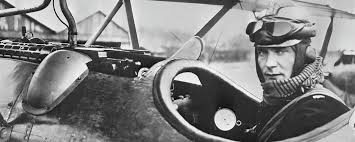




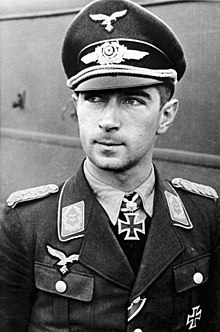
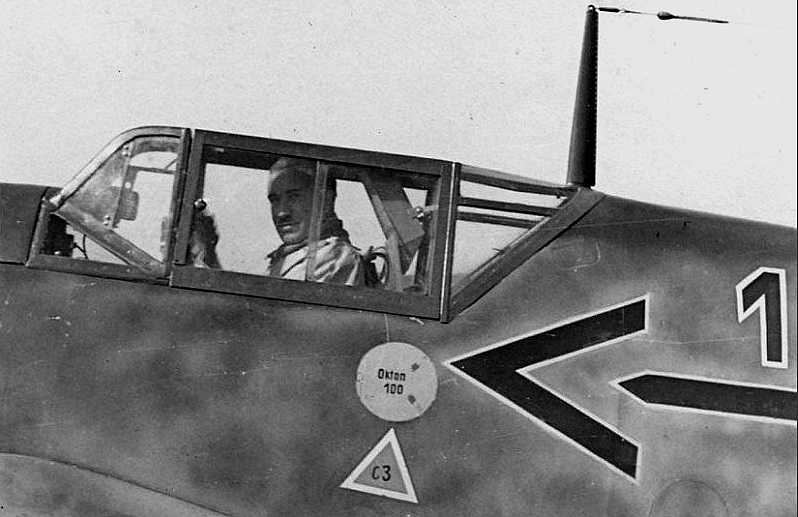



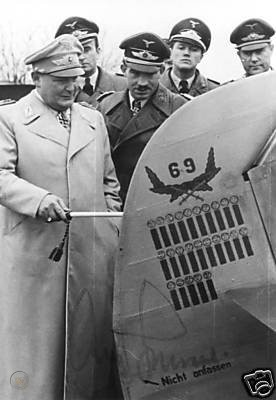












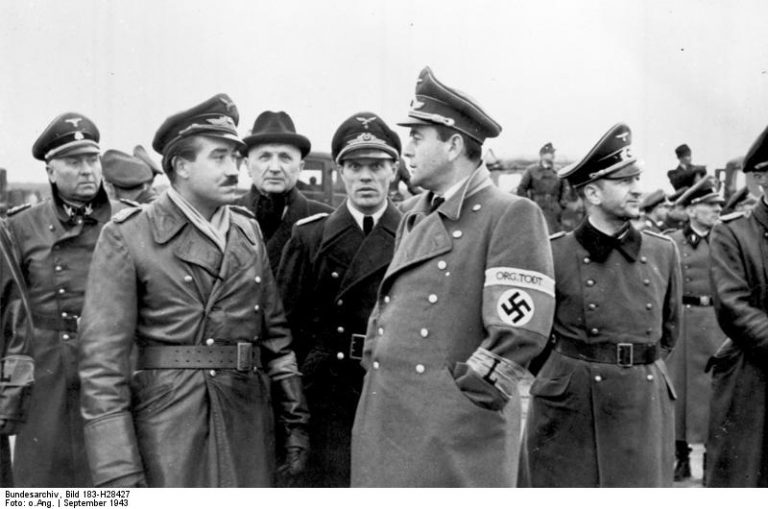
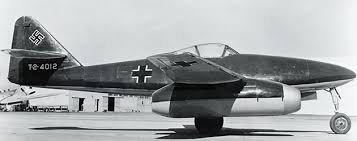





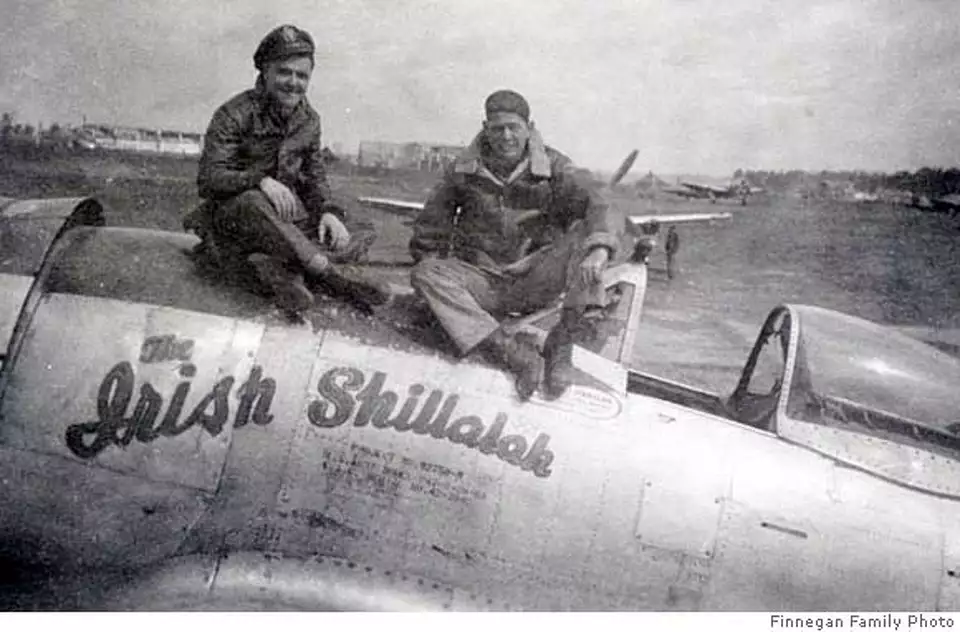




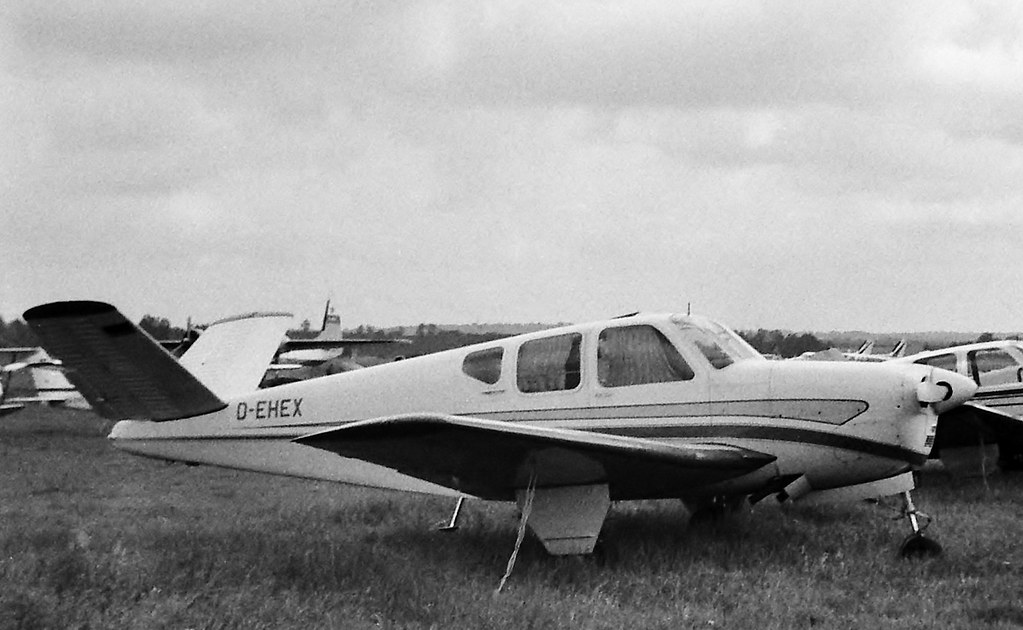





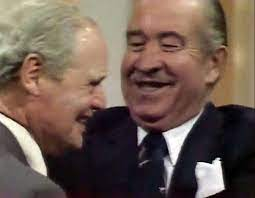


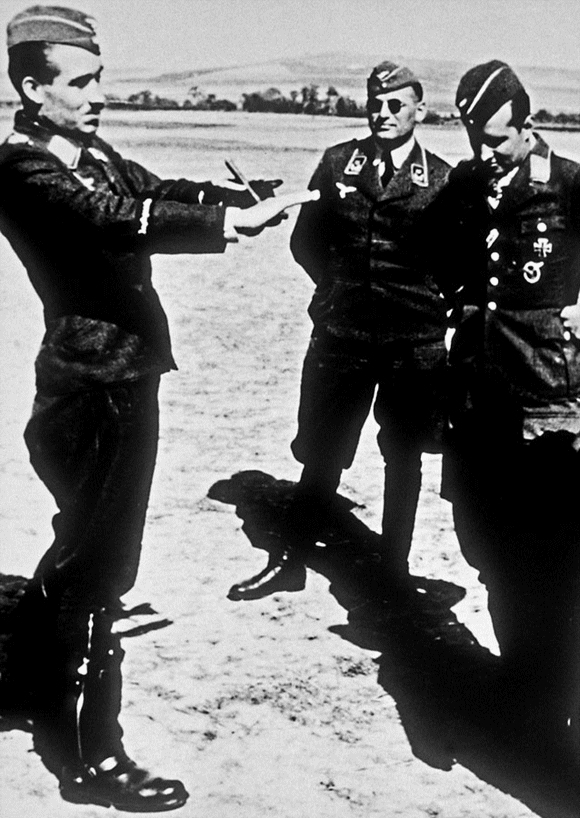

No comments:
Post a Comment